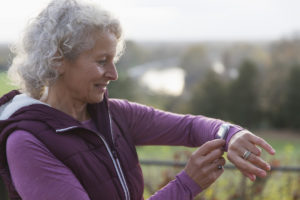Research/News
IDEA Member Spotlight: October 2019
Ammar Zoubi
Member Since 2017 • Naim Village, Israel
Ammar Zoubi says he lives “on the other side of the world,” but his story really hits home. After years as a bodybuilder, he became a certified personal trainer, eventually getting hired at the gym where he was a member.
October 2019 Question of the Month: Fitness Misinformation
How do you or your facility handle the issue of health and fitness misinformation? Since client education is critical in setting realistic expectations and achieving fitness and wellness goals, we want to hear how you’re tackling this issue,what creative solutions you’re using and how your efforts are being received. Please share your success stories.
We want to hear from you!
2019 IDEA® World Scholarship Recipients
In rising to meet major challenges and needs—from overcoming cancer, a staph infection and even a four-story fall inside an elevator, to serving reservation residents and low-income individuals in high-crime neighborhoods—the 2019 IDEA World Scholarship recipients have shown character, determination and a commitment to helping others.
Are 10,000 Steps Necessary?
Are some of your clients obsessed with achieving their step counts every day? While 10,000 steps is a popular marker, it turns out that taking as few as 4,400 steps per day is associated with a lower risk of death for women with a mean age of 72 years.
“Clearly, even a modest number of steps was related to lower mortality rate among these older women,” said principal investigator I-Min Lee, MBBS ScD, at Brigham and Women’s Hospital in Boston.
Morning Exercise and Cognitive Fitness
There may be something to the adage “The early bird catches the worm,” and it’s good news for those who love early-morning workouts. Not only is sunrise training an invigorating way to start the day; it may also stimulate adequate blood flow levels to the brain throughout the day, even during lengthy periods of inactivity.
Childhood Activity and Midlife Brain Fitness
Here’s one more solid reason to inspire kids to exercise. The secret to maintaining cognitive fitness later in life may lie in getting active while young and staying active throughout teen, young-adult and middle-aged years.
Sitting Increases Health Risks Independent of Exercise
It’s likely you have many clients who work sedentary jobs. Encourage them to simply move as much possible because, according to research,
people who sit for many hours, regardless of whether or not they exercise regularly, are at increased risk of higher liver-fat levels, a leading contributor to type 2 diabetes.
Maternal Weight and Pregnancy Complications
Encourage your pregnant clients (if cleared by their doctors) to keep working out with you. A new study shows that maintaining a healthy weight before and during pregnancy is a key factor in avoiding pregnancy complications.
First-Time Marathon Training Has Anti-Aging Effect
Here’s a good reason to encourage your midlife clients to try an inaugural running event. First-time marathon runners who trained for 6 months saw a 4-year reduction in arterial age, according to study findings presented at EuroCMR 2019, a scientific congress of the European Society of Cardiology.
Caffeine—An Equal Opportunity Ergogenic Aid
Caffeine is known to increase performance when taken before endurance activities, but more than 80% of studies have focused on men. A recent randomized, double-blind, crossover study out of Queensland, Australia, aimed to determine whether or not gender affects ergogenic responses to caffeine.
Minimalist Shoes and Stronger Foot Muscles
Minimalism is trending in many areas of life, including athletic shoes, with many fans touting numerous benefits. But does the evidence support the hype? Yes, according to research findings published in Medicine & Science in Sports & Exercise (2018; doi:10.1249/MSS.0000000000001751). Walking in minimalist shoes is as effective as foot-strengthening exercises and may result in better compliance than doing specific exercises.
Social Media Influencers Give Inaccurate Health Advice
Have you been frustrated by bad health and fitness advice doled out by social media influencers? You’re not alone, and if you sense that much of the popular online health information is wrong, you’re right! A recent study of key U.K. social media influencers’ weight management blogs—presented at the European Congress on Obesity in Glasgow, Scotland, in April 2019—showed that most influencers were not reliable weight management resources.
2019 IDEA World Fitness Awards Recipients
Veteran fitness pros know how important it is to pay attention to clients as unique individuals. Experience, education and empathy are key qualities that equip seasoned pros to help a wide variety of people with diverse needs.
Is It Time to Replace Fruit Juice With Whole Fruit?
It’s not breaking news that consuming too many sugar-sweetened beverages is bad for our health. Now, findings from a large cohort study involving more than 13,000 American adults ages 45 years and older suggests that drinking glassfuls of OJ may not be such a good idea either. As reported in JAMA Network Open, for each additional daily 12-ounce serving of fruit juice consumed, there was a 24% increase in the risk for all-cause mortality.
Processed Food Linked to Weight Gain
Over the past several decades, fast-food and processed/packaged foods made with cheap ingredients like white flour and salt have come to dominate the American diet. While an established link between eating too much junk food and obesity has been made, there is still a need for more research to suss out the reasons why.
Soda Tax: Drink Pop, Pay More
Love sodas or loathe them, it’s becoming harder to ignore the impact that a “soda tax” can have on consumption rates. A tax of 1.5 cents per ounce of sugary drinks sold in Philadelphia, implemented in 2017, resulted in a 51% drop in sales compared with the previous year, although that figure was partially offset by a rise in sales in neighboring no-tax towns, according to research published in JAMA.
Teen Rebels Turn Away From Junk Food
We’ve long known that junk food marketing shapes the way our youth eat. After all, on any given day teenagers are exposed to a lot more advertisements for candy bars and soda than, say, cauliflower. Such is the power of food marketing on the growing brain. Now, a study in the April 2019 issue of Nature Human Behaviour has found that tapping into the rebellious inclinations of teenagers may get them to eat more salads.
Pesticides and Produce
The eco-minded nonprofit Environ?¡mental Working Group recently released this year’s update to its popular Shopper’s Guide to Pesticides in Produce™. Their Dirty Dozen™ list ranks conventionally grown fruits and vegetables that, according to their analysis of available data, tend to contain the highest concentration of pesticides and/or the greatest number of different pesticides. For instance, more than 90% of kale samples had two or more pesticide residues.
Delicious Danger? A Research Update on Artificial Sweeteners
In human evolution, the preference for sweet taste was beneficial, since it helped to direct newborns toward eating nutritious food. Recent advances in medicine and nutritional sciences suggest that reducing intake of products high in sugar and salt could improve public health. Nevertheless, many people adore sweets and, therefore, artificial sweeteners (AS)—food supplements with chemical structures different from sugar—made their way onto the market.
Having the Bone Health Talk With Clients
Clients may ask you about calories or how to “tone,” but how often do they ask questions about bone health and osteoporosis? If clients aren’t asking these questions, they should: 54 million adult Americans are at risk of breaking a bone (NOF 2019a). You probably already know that people who have osteoporosis should do weight-bearing exercises to slow the degradation and ease the effects. However, most people are given no more explanation than that. You may be in a position to offer answers to some of your clients’ questions.



















